Buddha, Meditation, Medicine
INTRO TO ACUPUNCTURE TREATMENT
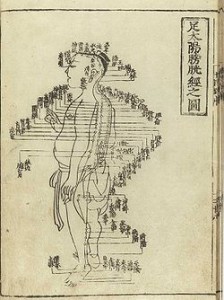
> Deutsche Akademie für Akupunktur <
Acupuncture is the procedure of inserting and manipulating filiform needles into various points on the body to relieve pain or for therapeutic purposes.The word acupuncture comes from the Latin acus, „needle“, and pungere, „to prick“. In Standard Mandarin, 針砭 (zhÄ�n biÄ�n) (a related word, 針灸 (zhÄ�n jiǔ), refers to acupuncture together with moxibustion).According to traditional Chinese medicine, acupuncture points are situated on meridians along which qi (a „life energy“), flows. Modern acupuncture texts present them as ideas that are useful in clinical practice and continue to inform the practice of acupuncture, but there is no evidence to support their existence and they have not been reconciled with contemporary knowledge about biology, physics or chemistry.
Moxibustion (Chinese: 灸; pinyin: jiǔ) is a traditional Chinese medicine therapy using moxa, or mugwort herb. It plays an important role in the traditional medical systems of China, Japan, Korea, Vietnam, Tibet, and Mongolia. Suppliers usually age the mugwort and grind it up to a fluff; practitioners burn the fluff or process it further into a stick that resembles a (non-smokable) cigar. They can use it indirectly, with acupuncture needles, or sometimes burn it on a patient’s skin.
An Introduction to Different Types of Acupuncture Treatment:
Perhaps the first image that comes to mind of an acupuncture patient is that of a person sitting there with any number of needles stuck into their skin at particular points on their body such as the ear or wrist. In fact, this picture is a pretty accurate image of acupuncture treatment, with these sessions lasting anywhere from a few seconds to half an hour or more depending on the problem being treated. The needles are usually inserted just deep enough into the skin to hold them firmly in position, although they are inserted deeper if the symptoms being treated require it. Sometimes a twirling motion is used to insert the needles, which may on some occasions be warmed before insertion or be heated whilst they are under the skin. In most instances the insertion, manipulation or removal of the acupuncture needle causes no pain other than the very occasional slight twinge. If anything, the patient tends to feel more relaxed during the session, often experiencing a warm rush of energy. There are patients who will feel no immediate effects but instead notice changes over a more gradual period of several weeks.
Some varieties of acupuncture do not rely on needles. The thinking behind these methods, however, is exactly the same as conventional acupuncture technique and focusses principally on a knowledge of acupuncture points, the make up of the human body and an understanding of the importance of proper energy flow. The essential difference is that rather than a needle some other method is used to trigger the acupuncture point. For example, in sonopuncture, a device producing sound waves is applied to the acupuncture point; there are practitioners who use vibrating devices such as tuning forks to achieve similar results. Although these practices are being used increasingly there is significantly less documentation as to how effective they are compared to traditional needle based acupuncture.
The use of low voltage electric currents applied to acupuncture points has been in use since the mid 1950s. Sometimes this method is combined with that of the insertion of a needle, on other occasions a small wire connected to the current is simply placed on the skin, resulting in a light tingling sensation. In spite of being independently studied in both Europe and the US in the 1930s and 1940s western medicine seems to have subsequently lost interest in investigating its benefits any further.
Acupressure is perhaps the best known of the variations of traditional acupuncture. In this method no instruments are used other than the pressing of fingers to the acupuncture point. It can also be readily combined with other massage techniques such as shiatsu. It has the advantage of being relatively easy for even the layman to perform, aided by diagrams of pressure points on the hands and feet for example. It goes without saying, however, that although these diagrams can be helpful for relieving minor symptoms, a professional acupuncture practitioner will have a full and more effective understanding of the entire acupuncture system which goes far beyond simply knowing where the acupuncture points are found.
Acupuncture today embraces the use of many different instruments. The application of heat remains the most traditional choice amongst the alternatives, although approaches as varied as friction, magnets, suction and even laser beams are also used. Acupuncture is a therapy which has clearly stood the test of time and with is enormous adaptability and effective results, is the perfect compliment/alternative to western medicine.
> Meet Acupuncture Groups and Studies at facebook <
> Meet Moxubustion Groups and Alternative Medicine at facebook <
FASTING PRACTICE OF NYUNGNE
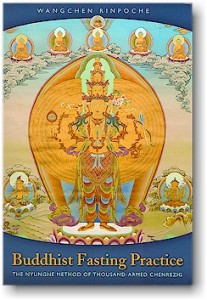
> Nyungne Method of Thousand-Armed Chenrezig <
> TRADITIONAL TIBETAN MEDICINE <
The fasting practice of Nyungne is a well known, very popular, and profound purification practice that is widely performed in Tibet.
One set of Nyungne consists of two days of practice. The first day is the preliminary day, and the second day is the actual fasting day. One takes what is called the Tekchen Sojong vow, the mahayana vow of Restoring and Purifying Ordination, with a total of eight precepts, and on the preliminary day one eats only one meal with drinks for the entire day. The meal is completely and purely vegetarian, which means it is free from any meat sub¬stance as well as onions, garlic, eggs, etc. The next day is a complete fast with no meals or drinks, and one must also be silent.
The source of this practice is a revered historical Buddhist figure known as Gelongma Palmo. She was actually an Afghani princess during a time when Afghanistan was a great Buddhist nation. Padmasambhava, who is considered second only to Lord Buddha, is also known to have come from that area. In Buddhist history books this place is known as Oddiyana, in what is now northwest India.
Gelongma Palmo was a very learned, fully ordained Buddhist nun who overcame the dreaded disease of leprosy through her practice of Nyungne by means of a vision of Chenrezig. From her the lineage of this extraordinary Nyungne practice tradition began. ~ Wangchen Rinpoche
Nga Gyur Shed Dup Childrens’ Home (NSCH)
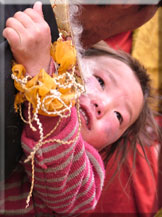
> ABOUT NSCF, Teachings, Activitys <
Nga Gyur Shed Dup Childrens’ Home (NSCH) is a non-profit social welfare home dedicated to provide care for orphans, abandoned and underprivileged children and those that living under the poverty line. With limited resources, it has been able to provide a decent home to abandoned and orphaned children, offering them family life, medical care, education and hope for the future.
Currently, there are 64 children receiving care and monastic education in NSCH. For the moment, we provide 16 bedrooms coupled with 2 double-decker beds to accommodate 4 children each room; a classroom, a scholar’s room and a kitchen.
Please contribute as much as your compassion to allow this noble cause in order for mankind to help each other and those in needs to live a normal life. The children urge for your help!
NSCH provides a unique opportunity for underprivileged and orphaned children to be sheltered and educated at an attached school, to be loved and cared for in a family-like environment.
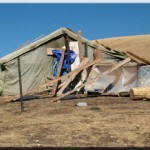
The objectives of NSCH are:
- To provide food and housing in a secure and nurturing home environment.
- To provide quality education that emphasizes on ethical and spiritual development and academic achievement.
- To prevent them from engaging in anti-social activities and promote ethical values, human potential and sense of responsibility towards society and environment.
- To educate the children and community about health concerns and offer adequate medical care.
Tibet is a land of dreams, of temples and Himalayan expeditions, of ancient cities and picturesque villages and the birthplace of many enlightened Buddhist Masters (Mahasiddhas). This ancientness nation has inherited and retained a wholesome culture and unique customs.
This land of cultural diversity and rich tradition is also one of the poorest regions in the world and for much of its population, daily life is difficult. More than half of the people live below the poverty line. The harsh cold climate in this mystic land adds to the suffering of the Tibetan communities.
NSCF is a charitable organisation that receives no governmental funding and relies solely based on the charitable contributions of donors from all over the world to assist us in our effort to shelter and educate those children and elderly in need.
REIKI – SYSTEM OF NATURAL HEALING
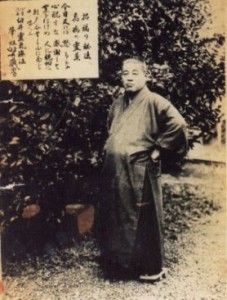
Reiki is a simple, gentle and very powerful way of healing. Reiki is also a spiritual path which can lead us into the inscrutable and ineffable mystery of the Universe. Many of us come to Reiki seeking healing, and never learn much about Reiki’s spiritual depth. Yet, these two aspects of Reiki – the healing and the spiritual – are intertwined. Just like heaven and earth meeting each other in the beautiful dance of time meeting eternity; so too in Reiki, our absolute, eternal essence expresses in the relative, constantly changing, physical aspect of our lives.
Within this dance of heaven and earth, time and eternity, physical and eternal, we are faced with an ongoing progression of choices about how we engage with our lives. Our karma, interest, commitment, capacity, (and some luck, or grace), will determine how we choose. And the way we choose will shape the story of Reiki we’ll eventually tell.
People come to Reiki for different reasons: some for a method to heal the physical body, for use with themselves or others. Others wish to grow in peace and tranquillity. Many seek knowledge of the unseen mystery behind the physical world. And maybe all of us seek a way to deal with the suffering and meaninglessness of everyday life, and the “dark nights” of our soul. Reiki is invaluable for all this.
As a healing method Reiki offers a simple, hands-on technology that anyone can learn to use. If that’s all you’re seeking, it should serve you well. But there is more.
As a spiritual path Reiki offers a collection of skillful methods to help us come to know our real nature – not merely as a nice intellectual idea – but a profoundly intimate, ever-deepening experience of mystery, totally and perfectly beyond anything our ordinary minds might manufacture or our concepts may grasp. In fact, all we can do speaking about this reality is to point to mystery, like fingers pointing to the moon. Ultimately, it is something we’ll know as our real nature and as the nature of all things.
While this goal may seem ambitious, there is no need to be intimidated. Through Reiki, you will gradually be introduced to knowledge. And as you become able to see more you’ll recognize yourself as completely whole and absolutely perfect, since the very beginning.
Reiki challenges the unreasonably low opinion we usually hold about our own potential. It challenges us
- To be as healthy, complete, and conscious as possible, in order to fully occupy our place and role in this life.
- To become so powerful, that we may be able to make our biggest contributions to this world from the privacy of our hearts, without anyone ever knowing about it.
- To be a fountain of peace in the midst of turmoil.
- To be a source of healing amid dis-ease.
- To be a centre of tranquillity in the chaos of everyday life.
- To be a place of love and beauty in the midst of fear and ugliness.
- To be caretakers of this world, and of all creation.
Reiki is one of the gifts we have to help us along this path. It comes in humble guise, and is exceedingly gentle. Yet there is power hidden here. Through Reiki we come to recognize our dignity, our magnificence and we’re challenged to uncover our hidden splendour. We recognize our responsibility to each other and to all of life. We recognize Universal assistance as our birthright, and the miracle of unfolding as our path.
During the training you will attempt to present Reiki in its basic precious magnificence. At the core of this is the transmission of the heart-essence of this teaching: the atmosphere of compassion and wisdom which is the essence of all enlightened beings, and the skilful reminders that this is the real nature of each and every one of us. Still, the responsibility for liberation through this knowledge always remains our own, with infinite support if we’re willing to ask for it.
Reiki is not a book, nor a workshop. Reiki is alive inside you: a living current of love, wisdom, power as fresh and new as it was when Dr Usui first “discovered” it; eternally new as the in and out-breath of the Universe. May it bring you great joy and bless all the world!
A History of Modern Reiki
After almost a century of very gradual growth, Reiki exploded onto the world scene during the last 5 years or so. Despite its great popularity, the history and origins of Reiki were shrouded in myth and mystery until the fairly recent emergence of several records describing its development. At last it is becoming possible to piece together a more coherent story of the origins and spirit of Reiki, as expressed by its founder, Mikao Usui.
The brilliance of Dr Usui was that he connected, distilled and codified various complex teachings to produce an essentially „universal“ system of healing and spirituality, largely devoid of cultural trappings, thus enabling the „Sacred Science“ to be used by anyone for the benefit of everyone.
> Meet REIKI Groups at facebook <
> Meet traditional REIKI and Dr. Usui Mikao Groups at facebook <
INTRO OF THE FIVE TIBETAN TRADITIONS
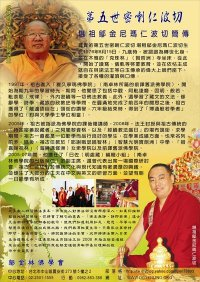
> BUDDHISM < and > BÖN <
Introductory History of the Five Tibetan Traditions
> TIBETAN LINEAGES OF MASTERS <
Introduction of Buddhism by Emperor Songtsen-gampo:
The history of the five Tibetan traditions of Buddhism and Bon. The four Buddhist traditions are Nyingma, Kagyu, Sakya, and Gelug, while the pre-Buddhist Tibetan tradition of Bon makes the fifth. Often we hear the syllable „pa“ at the end of these names. It means a follower of that tradition; for instance, Gelug pa means someone who follows the Gelug tradition.
To survey the history, we need to go back to the seventh century of the Common Era. At the beginning of that century, a king from Central Tibet named Songtsen-gampo conquered the Western Tibetan kingdom of Zhang-zhung and created the first unified Tibetan Empire. The custom in those days to unify an empire was for the king to marry princesses from nearby kingdoms – neighboring kings were less likely to attack the palaces where their daughters lived. Emperor Songtsen-gampo married princesses from China, Nepal, and Zhang-zhung. These princesses brought with them the religions of their native countries. The Chinese and Nepali princesses brought Buddhist texts and the Zhang-zhung princess brought her Bon beliefs. Bon was the Zhang-zhung native religion.
If we look from a Western historical viewpoint, Buddhism did not have much of an impact in this earliest period. The main development was that this first emperor built thirteen Buddhism temples in his domain. The map of Tibet was seen as a female demon lying on the earth. Choosing thirteen spots on the body of the demoness, like acupuncture points, the emperor commissioned temples built on each of them to subdue and control the energy of the demoness of Tibet. That is how Buddhism came to the Land of Snows.
To unify his empire further, Songtsen-gampo wished to have an alphabet for writing the Tibetan language. Thus, he sent his minister, Togmey-sambhota, to obtain the alphabet from Khotan – not from India, as is often explained in the traditional Tibetan histories. Khotan was a Buddhist kingdom north of Western Tibet in Central Asia. The route to Khotan that the minister took passed through Kashmir. When he arrived there, he discovered that the master he was going to meet in Khotan happened to be in Kashmir at the time. This is how the story evolved that the Tibetan writing system came from Kashmir. Orthographic analysis reveals that the Tibetan alphabet actually follows features distinctive only to the Khotanese script. Afterwards, there was much more contact with Buddhism in China and Khotan then there was with Indian Buddhism. The Bon religion, however, remained stronger in Tibet than Buddhism during this earliest period. It provided the ceremonies used in state rituals.
The Old Transmission Period (Nyingma)
In the mid-eighth century, another great emperor, Tri Songdetsen, ascended to the throne. He received a prophecy about future Buddhist teachings in Tibet and, in accord with this prophecy, he invited a great Buddhist teacher from India, Shantarakshita. Soon after the arrival of the Indian Abbot, a smallpox epidemic broke out. The court ministers, who were against all foreign influences in Tibet, blamed the smallpox on Shantarakshita and expelled him from Tibet. Before leaving, Shantarakshita advised the Emperor to invite Guru Rinpoche, Padmasambhava, to come and subdue the adverse conditions and problems. Tri Songdetsen followed this advice, and Padmasambhava came and rid Tibet of the interferences. The Emperor then invited Shantarakshita to return. There were already several Buddhist temples in the land, but now they built the first monastery in Tibet, at Samyay, just south of Lhasa. The Indian Abbot ordained the first monks.
Guru Rinpoche taught a little, but actually did not teach very much in Tibet. He mostly buried texts, thinking that the Tibetans at that time were not yet receptive. These texts were of the highest tantra teachings called dzogchen, the great completeness.
After this, many Chinese, Indian, and Zhang-zhung scholars worked together harmoniously at Samyay monastery, mostly compiling and translating texts from their own traditions. Soon, Buddhism was made the state religion. The Chinese had the largest influence at this time. Every second year, the Chinese emperor sent two monks to Samyay. The form of Buddhism the Chinese monks followed was Chan, the Chinese predecessor of Japanese Zen.
Shantarakshita predicted some conflict with the Chinese. Please keep in mind that the religious history did not happen in a vacuum; it happened in connection with the political history and there were a lot of wars between China and Tibet at this time. Shantarakshita said that they should invite his disciple, Kamalashila, to settle whatever problems might arise.
Meanwhile, Emperor Tri Songdetsen sent more Tibetans to India to bring back teachings and invite more Indians to his land. More texts were buried. Because there were so many wars with China and Central Asia and because the ministers were against any foreign influence in Tibet, it makes sense that there was a persecution of the Bonpos in Samyay and at the court. After all, the Bonpo faction was primarily from Zhang-zhung.
There was also a Dharma debate between Kamalashila, representing the Indians, and the Chinese representative. The Chinese lost. Of course, there was no way that a Chan master could defeat, in logical debate, a master in logic from India. It was no contest: Chan practitioners have no training in logic. For many reasons, one could postulate that the debate was a political move taken to provide an excuse for expelling the Chinese and for adopting Indian Buddhism as the main form of Buddhism in Tibet. Of all the kingdoms and empires neighboring Tibet, the Indians posed the least military threat.
I like to present history not from the standard devotional Tibetan point of view but a little bit more from a Western, scientific viewpoint, since I do have that training. I think it indicates a little more clearly what happened. It makes more sense.
Many more translations took place after this. In the early ninth century, under imperial sponsorship, the scholars compiled a Sanskrit-Tibetan dictionary and standardized the translation terms and style. It is quite interesting that the scholars did not include any tantra terms in the dictionary; tantra was already quite controversial.
In the mid-ninth century, the infamous persecution of Buddhism by the Emperor Langdarma took place. Rather than making Langdarma into the devil, as devotional histories tend to do, it may be more objective to see this persecution as a reaction to the abbots and monks at Samyay who were trying to assert too much influence on the government. Too much of the taxes raised by the state went for supporting the monasteries, and the economic burden had become untenable.
Actually, what Langdarma did was shut down the monasteries; it was not that he destroyed Buddhism. He did not destroy the Buddhist libraries, because Atisha found them when he came to Tibet a century later. Buddhism continued outside the monasteries. What had started before and continued during this so-called „old transmission period“ (old translation period) later became known as „the old tradition,“ the Nyingma tradition.
> Meet Ogyen Ling Buddhist Association at facebook <
> Meet Tulku Ogyen Rinpoche (Khentrul) Group at facebook <
> Meet Tulku Ogyen Rinpoche (Khentrul) personal site at facebook <
> ABOUT KHENTRUL:
DALAI LAMA CENTER, TIBET. MED. & ASTR.

> TIBETAN MEDICINE & ASTROLOGY <
Mission Statement
The Dalai Lama Center for Peace and Education educates the heart and fosters compassion through: creative learning, facilitating and applying research, and connecting people and ideas.
Values
The Center encourages values such as compassion, forgiveness, tolerance, contentment and self-discipline through engagement with the community. These are the values that contribute to peace and harmony locally, nationally and globally. We believe that most people embrace and recognize the importance of these values, but often don’t know how to access the information and guidance they seek to bring them into their lives. We will help them do that.
The Center seeks, in all of its activities, to reflect values of compassion, mutual understanding, inner well-being, mindfulness, creativity, peacefulness, warm heartedness, aspiration and interconnectedness.
LAMA JIGME´s FREE TIPS ON MEDITATION

FREE tips and teachings on Meditation and the Spiritual Path.
How could you help Feed a Buddhist Monk for just One dollar?
Please click > HERE < to learn how
Lama Jigme a refreshing encounter Episode Lama Jigme Gyatso is an ordained monk in an age when many are content to hide behind tradition, hearsay, dogma and circular reasoning it can be refreshing to encounter someone like him. Taking his teachers instructions to heart, he practices and transmits the Buddhas teachings in an essentialized and pragmatic manner that is as profoundly effective as it is deeply practical.
Who is Lama Jigme ?
Ordained as Lama Jigme Gyatso: Rime Manipa Tantrika, which translates as “Ocean of Courage Teacher; ” he is a Jewish-american born, Tibetan-buddhist: Monk, Teacher, Healer and Tantrika.
Lama Jigme was taught to be devoted to the Buddha of Compassion {Manipa} in a NON-sectarian manner {Rime} that practices Sutra’s union of compassion and insight as well as the union of Tantra’s paths of devotion, imagination and sensuality {Tantrika}.
In an age when many are content to hide behind tradition, hearsay, dogma and circular reasoning this controversial and unconventional teacher insists that a true Lama’s resume, credentials and letters of recommendation are the vastness of his Compassion, the profundity of his Insight and the power of his Effectiveness.
Lama Jigme Gyatso has had the very good fortune to receive teachings from every major Buddhist lineage of the Theravada, Mahayana and Tantric traditions.
Taking his Lama’s instructions to heart, he practices and transmits the Buddha’s teachings in an essentialized manner that is as profoundly effective as it is deeply practical.Interessen:Lama Jigme is playful and dynamicas well as loving and insightful.
Just as the alchemists of legend turned lead into gold, instructions received from this precious teacher can transform sorrow, anger, and fear into peace, love, joy and bliss.
Introduction into Trad. Tibetan Medicine

> Grundlagen der Tibetischen Medizin <
First Seminar Cycle “ Introduction into Traditional Tibetan Medicine “ successfull:
Around half of the participants of the seminar „Introduction into Traditional Tibetan Medicine“ were eager enough to take the exam at the end of the first seminar cycle. After having written their homework, the participants came from different parts of Austria (Vienna, Upper and Lower Austria, Styria, Carinthia) and Germany in order to accomplish the challenging 3-hour exam on March 21.
„The exam motivates me to deepen the knowledge. The Tibetan Medicine is rather complex and I would like to make use of it later on at my own small clinic. Therefore the studies are very important“, said doctor Z. from Vienna.
These introductory seminars delivered a „first sight“ into the diversity and depth of the Traditional Tibetan Medicine. Many of the participants want to continue and plan to attend the diploma course next year where they can extend their gained knowledge and get a deeper insight into the fields of „Tibetan Massage“ and/or „Gentle Therapies in the TTM“. In addition, special seminars for doctors are offered in the field of „Diagnostic Methods in the TTM“ where authentic Tibetan doctors will teach the art of pulse and urine diagnosis.
„I am happy that there is a big interest in the traditional Tibetan art of healing. This will help spread the TTM authentically in the West“, says Ven. Geshe Tenzin Dhargye, director of the Tibet Center. „A lot of our participants are doctors. Therefore we want to cooperate more closely with Austrian doctors in the future and thus want to cultivate the dialogue among experts“, explains Geshe T. Dhargye.
Tibetan medicine is a centuries-old traditional medical system that employs a complex approach to diagnosis, incorporating techniques such as pulse analysis and urinalysis, and utilizes behavior and dietary modification, medicines composed of natural materials (e.g., herbs and minerals) and physical therapies (e.g. Tibetan acupuncture, moxabustion, etc.) to treat illness.
The > Tibetan medical system < is based upon a synthesis of the Indian (Ayurveda), Persian (Unani), Greek, indigenous Tibetan, and Chinese medical systems, and it continues to be practiced in Tibet, India, Nepal, Bhutan, Ladakh, Siberia, China and Mongolia, as well as more recently in parts of Europe and North America. It embraces the traditional Buddhist belief that all illness ultimately results from the „three poisons“ of the mind: ignorance, attachment and aversion.
Buddhistisch Medizinisches Zentrum

Tulku Lama Lobsang
Buddhistisch Medizinisches Zentrum
Nangten Menlang ist eine Organisation, die sich der Bewahrung und Lehre der Wissenschaft der Tibetischen Medizin und des Buddhistischen Wissens widmet. Tulku Lama Lobsang, die achte Wiedergeburt des Nyentse Lama, hoch angesehener Buddhistischer Meister, Doktor und Astrologe, verkörpert die lebende Übertragung der weltlichen Weisheit. Er lehrt Methoden, um physische Gesundheit, mentales Glücklichsein und Entwicklung des Geistes zu erreichen.
Dem Mittleren Weg folgend, lässt er in jedem die ihm angeborene Weisheit wieder aufleben, die immer existiert hat. Vorträge, Workshops, Retreats, Konsultationen und Behandlungen werden in vielen Ländern weltweit angeboten und von lokalen Zentren organisiert.
YOGA TANTRA IN BUDDHIST SYSTEMS
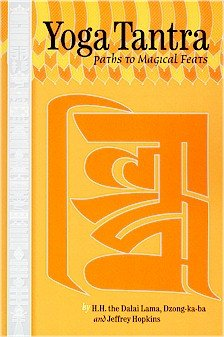
> Buddhaguhya< > Tantric Buddhism <
> INTRODUCTION TO THE BUDDHIST TANTRIC SYSTEMS <
–from Yoga Tantra: Paths to Magical Feats by H.H. the Dalai Lama, Dzong-ka-ba and Jeffrey Hopkins, translated and edited by Jeffrey Hopkins, published by Snow Lion Publications
Buddhaguhya’s Introduction to the Meaning of the Tantra and its commentary by the master Padmavajra describe how to achieve many different types of feats in considerable detail. These include achieving clairvoyance, love, compassion, the altruistic intention to become enlightened, and so forth. In Yoga Tantra there is also the achievement of an actual body that is a special type of form having the marks of a Buddha’s body; this seems to be like the mental body achieved through the path of the Perfection Vehicle. The process is to generate yourself as the deity and then imagine that all of space is filled with similar small Buddha bodies, which are brightened with the exhalation of breath and drawn into your heart with the inhalation of breath, like butter melting into sand.
By contemplating this again and again, capacity is gradually achieved, whereby eventually your body turns into a Bodhisattva Knowledge-Mantra Bearer who has a similitude of the form of a Buddha.
Paths to Magical Feats
by H.H. the Dalai Lama,
Dzong-ka-ba and Jeffrey Hopkins,
translated and edited by Jeffrey Hopkins
Contact Us:
Snow Lion Publications
N. America: (800) 950-0313
Worldwide: (607) 273-8519
By Mail: PO Box 6483,
Ithaca, NY 14851 USA
By Email: tibet@snowlionpub.com
On the Web: www.snowlionpub.com
Doctor of Traditional Tibetan Medicine
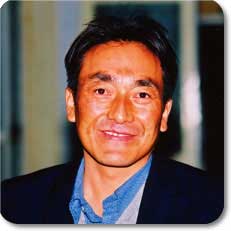
>> Kagyu Samye Dzong London <<
Doctor of Traditional Tibetan Medicine Working with the Tara Institute of Tibetan Medicine (Please note: Dr. Soktsang has recently changed his name from his former title of Dr. Dhonden.)
Dr. Soktsang is highly experienced in the field of Traditional Tibetan Medicine, having studied and practised over the past twenty years.
He commenced his studies in Tibet for a period of five years under the guidance of an uncle, who was also a doctor. This enabled him to enter the Central Medical Institute for Traditional Tibetan Medicine in Lhasa, where he studied for a further five years until he graduated with the MEN-RAMPA, (Tib.) or Masters Degree of Tibetan Medicine. After graduating, he went to work at the Lhasa Mentse Khang Hospital, the premier centre of excellence of Traditional Tibetan Medicine.
NATURAL GARDENING
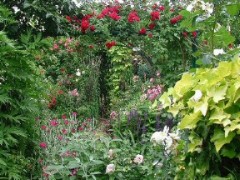
> MEDITATION AT JAPANESE GARDEN <
> Österreich´s Klostergärten & Gärten um Wien <
Natural gardens are especially valuable biotopes: colourful and manifold, they offer recreation, healthy crops and experiences next the front door.
They are oases for plant, animal and man. There they all develop a sense of well-being because of natural gardening: hedgehog and dragonfly, rare plants and colourful perennials. This is promoted by the action “Nature in garden – keeping healthy what keeps us healthy”.
No peat, no easily soluble mineral manure, no pesticides
These are three main criteria to be met by all natural gardens. Among 30 other arrangement and cultivation criteria at least 10 have to be fulfilled, too (e.g. diversity of species in natural grass turfs, orchards, use of rainwater, wild shrubbery etc.).
“Nature in garden” became one of the most successful environmental actions in Lower Austria during the last few years.
Awards to natural gardens
The enamel badge is not only a decoration at the garden door, but also shows the gratuity to garden owners for their natural gardening. This medal is bestowed on persons who keep to certain criteria of the action “Nature in garden”.
“Nature in garden” is an action of District president Sobotka, “die umweltberatung” Lower Austria (LA), the office of Lower Austrian administration – environment and area promotion department and of the LA agrarian authority.
Japanische Gärten sind ein Ausdruck der japanischen Philosophie und Geschichte. Solche Gärten findet man teilweise auf Privatgrundstücken, in Stadtparks, bei buddhistischen Tempeln oder Shintō-Schreinen sowie an historischen Sehenswürdigkeiten wie alten Schlössern. Ihnen wird nachgesagt, eine geheimnisvolle Ruhe und Schönheit zugleich auszustrahlen.
Eine Sonderform, der viele der berühmtesten japanischen Gärten angehören, ist der Zengarten im Kare-san-sui-Stil, bei dem auf Wasser und größere Pflanzen ganz verzichtet wird. Beliebt geworden sind diese Steingärten auch als Miniaturen in Form einer etwa 30 cm breiten Kiste für den Schreibtisch. Beim Tsukiyama-Stil (künstliche Hügel) werden dagegen Berge von Steinen und kleinen Hügeln dargestellt, und ein Teich repräsentiert das Meer. Es handelt sich also praktisch um eine Miniaturlandschaft. Japanese Garden Journal > here <
Musō Soseki, auch Musō Kokushi genannt (1275-1351)Musō Soseki (jap. 夢窓 疎石; * 1275 in Ise; † 30. September 1351), auch Musō Kokushi genannt, war ein japanischer Zen-Meister, Politikberater, Gartengestalter, Verfasser von Zen-Gedichten und Zen-Sprüchen, sowie Kalligraph. Er gilt als Begründer der japanischen Teezeremonie.
Musō Soseki (sein Mönchsname, der Geburtsname ist nicht bekannt) war einer der einflussreichsten Zenmeister und einer der bedeutendsten japanischen Gartengestalter der Frühzeit. Sein Leben und Werk markiert die Übergangsphase zwischen der Kamakura-Zeit und der Muromachi-Zeit (= Ashikaga-Zeit).
Ausbildung
Geboren ist er im Jahr 1275 in Ise, sein Vater zog aber schon 1278 mit ihm nach Kōshū (Schreibweise auch: Kai; in der heutigen Präfektur Yamanashi), damals einem Pilgerort der Adligen. Bereits im Alter von 6 Jahren (nach anderen Angaben 8 Jahren) begann er sich mit dem Buddhismus zunächst der Shingon-Richtung zu beschäftigen, befasste sich z.B. mit den Schriften ihres Gründers Kūkai (774-835). Im Alter von 19 Jahren (nach anderen Angaben im Jahr 1297) konvertierte er zur Tendai-Richtung (Elemente beider Richtungen integrierte er später in seine Schule). 1294 trat er nach Bestehen einer Aufnahmeprüfung ins Kloster Kennin-ji (jap.: ji = Tempel) in Kyoto ein, wo er bei Muin Zenshi (nach anderen Quellen: Yishan Yining [Schreibweise auch: I-shan I-ning, Issan Ichinei] (1247-1317), ein damals berühmter aus China emigrierter Zen-Priester und -lehrer, dessen Vorbild der Chan-Meister Huai Su (Tang-Zeit, 737 bis nach 798) und Meister der Sung-Zeit waren) , später auch bei Koho Kennichi (1241–1316) seine Ausbildung in der Rinzai-Richtung (= Zen-Buddhismus) erhielt. In Sosekis kalligraphischem Werk ist sowohl der Einfluss des Chinesen Kūkai als auch des Japaners Ichinei zu spüren, es unterscheidet sich hierin von Kalligraphien anderer zeitgenössischer Zen-Meister. Die Rinzai-Schule war eng mit dem Kaiserhaus und der Militärregierung verbunden.
> Meet Everything about Gardening Group at facebook <
> Meet ZEN Group at facebook <
> Meet Zen Zentrum Oberpfalz at facebook <
HERBAL SOURCES OF TIBETAN MEDICINE
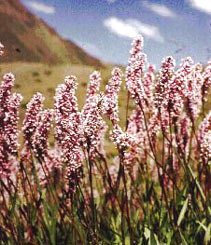
> HERBAL SOURCES OF TIBETAN MEDICINE <
Protecting the Himalayan varieties used in Tibetan medicines, exploring growing them as crops, and evaluating the healing properties of plants that grow elsewhere.
Tibetan medicine is celebrated as a source of sustainable and affordable healing preparations that are effective without lasting negative side effects. Our goal is to give people all over the world access to this unique insight into human well being.
Along with the need to provide training for a new generation of physicians and herbal pharmacists, and to translate the Tibetan medical so that students can begin their training without first having to learn to read Classical Tibetan, the main obstacle to wider use of Tibetan medicine is the limited supply of many herbs used in compounding the medications, some of which are already endangered by excessive non-professional harvesting.
His Holiness The Dalai Lama has warned that the health of the billions of people in the world cannot be sustained by medicines made with rare and endangered Himalayan plants. Even now, when Tibetan medicine has hardly begun to be practiced in Western countries, the herbs needed for making many of the medicines are in short supply. For example, the Men-Tse-Khang pharmacy in Dharamsala, India — the most respected source of Tibetan medicines — turns away all requests for medications except those accompanied by a prescription written by one of their own doctors. They will not accommodate even orders from their own graduates, those who have emigrated from India to other countries, explaining that to do so would deplete the supply of medicines needed in their branch clinics in India and Nepal.
Three different approaches to this scarcity of medicines are being explored. The most obvious and the most urgent is to preserve whenever possible the plants and animals currently used in Tibetan medicines, by protecting the ecologies that support those organisms, planting some species to increase the supply, and developing resources like seed banks to insure these species against extinction.
A second strategy is to extend the area where the herbs grow by planting in the wild and by finding ways of cultivating some species, as a way of preserving those that cannot be preserved in the wild, and as a way of increasing supplies.
The third is to evaluate the medicinal qualities of plants in other areas. Tibetan doctors have always used many imported materials in making their medicines, and believe that using substitute materials with similar therapeutic action is entirely appropriate when the ingredients of choice are unavailable. Tibetan physicians can identify plants indigenous to other areas that are suitable for use as substitutes for ingredients in traditional formulas and in developing new preparations.
Herbal medicine systems from other cultures will be useful in identifying promising species. Especially promising are two other systems which have ancient connections with Tibetan medicine and are still practiced: Indian Ayurvedic medicine and Chinese herbal medicine. Many of the herbs used in these systems are already used in Tibetan medicine.
The research needed for effort seems endless. The newsletter of the Chakpori Tibetan Medical Institute in Darjeeling, India, comments on some of the main issues: „To know which plants are vulnerable, endangered, or close to extinction, detailed studies have to be made. Also, the cause of rarity should be investigated (e.g., environmental causes, over exploitation by non-expert gathering, etc.). An important decision has to be made to replant not only the economically valuable plants but also the plants that are environmentally valuable and supportive of the total environment.
„Replanting sites should have the same characteristics as the original habitat. In traditional Tibetan medical texts, the side of the mountain, altitude, climatic condition, soil composition, etc. are mentioned [as important influences on the properties and potency of the herbs] …. research findings are essential guidelines for replanting the herbs in their natural environment. The size of the replanting area is also crucial because of genetic diversity and the problems of insular ecology. Monocultures, like the usual big plantations, should be avoided: mass plantations of certain species will not have the desired quality or power.“
Here on this page we offer links to Web sites relevant to preserving the plant species used in making Tibetan medicines, and increasing the supply of those herbs or finding substitutes, along with books and audio tapes on Tibetan herbs and related topics. Another page, Medical Research, Tibetan Style, gives resources relevant to other aspects of the immense task of preserving Tibetan medicine and making it available to the world.
> Meet Tibetan Incense Group at facebook <
> Meet Herbs for All Group at facebook <
> Meet the “ HERBS “ Group at facebook <
Tibetan Medicine, Spirituality, Compassion
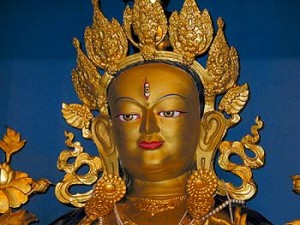
> CONGRESS – 10th anniversary of the New Yuthok Institute <
October 31 2009 (9h – 18h)
„Spirituality & compassion as cure of the body and mind“
Das > New Yuthok Institut < feiert dieses Jahr sein 10-jähriges Jubiläum. Aus diesem Anlass wird am 31. Oktober 09 ein Kongress in Mailand organisiert. Über ihre Erfahrungen mit Tibetischer Medizin im Westen berichten:
- Tibetische Medizin und Homöopathie, Dr. Victorine Cumero
- Beziehung zwischen Buddhismus und Tibetischer Medizin, Prof. Pasang Yonten Arya Tendi Sherpa
- Tibetische und Westliche Medizin, Dr. Med Walburg Maric’ Oehler
- Produkte der Tibetischen Medizin, Dr. Herbert Schwabl
- Tibetische Medizin und Onkologie, Dr. Alfredo Celano
- Mitgefühl und Tibetische Medizin als psychologische Therapie, Prof. Gioacchino Pagliaro
- Tibetische Medizin und alltägliche Probleme aus der Praxis, Dr. Simonetta Nicolai
- Präsentation ausgewählter Fälle, Dr. Tenzin Thupten
The New Yuthok Institute is an Association founded by Prof. Yonten Arya (T. Sherpa) with several medical doctors and psychologists to preserve and spread the age-old teachings of Tibetan Medicine.
This particular medical system is distinguished from all other Eastern Medicines because of its strong spiritual and psychological matrix linked to the connection initially created with Bon shamanism and, later and especially, because of its strong link to Tibetan Buddhism.
It is a well-known fact that Buddhism is at the center of Tibetan Medicine which began with the teachings of Buddha Shakyamuni, himself, and it is just this close and essential relationship with Buddhism which sets the Tibetan system apart from all others.
Tibetan Medicine, in addition to its high ethical values, gives us a detailed description of the mind, the mental states and how they function. Today, much of this large body of information has been scientifically validated by neuroscience. The Tibetan view takes not only the individual and biological aspects of the mind into account but also its energetic and spiritual dimension. It is this dimension which dictates how we view all things and how they take shape in our minds.
It is especially, though not only, for this reason that Tibetan Medicine has awakened great interest among the community of psychologists, psychiatrists and mental health workers.
Tibetan Medicine is also unique because it doesn’t isolate itself from medical-scientific views and, in fact, embraces and complements them to offer an extraordinary contribution not only because of the therapeutic results it achieves but also because of its ability to integrate with scientific medicine and with other complementary medicines.
Tibetan Medicine, today, provides the West with an extraordinary opportunity because TM can act as a bridge to unite the various scientific, medical and psychological disciplines and can provide a path to achieve the ‘humanization’ of medical care.
With this Congress, the New Yuthok Institute celebrates its tenth anniversary by presenting aspects of the important training it has provided to many psychologists, medical doctors, nurses, physiotherapists, naturopaths and health workers in general and the results it has achieved in the context of clinical applications.
> Geschichte der Tibetischen Medizin <
und die Modernen Aspekte der Tibetischen Medizin
Die Tibetische Medizin hat ihre Hauptwurzeln im Lande selbst und in der uralten Erfahrung und Geschicklichkeit des tibetischen Volkes, das seit jeher in enger Verbindung zur Natur gelebt hat und zu seinem Überleben in großer Höhe stets auf eigene Ressourcen angewiesen war. Im Laufe der letzten zweitausend Jahre hat aber auch die medizinische Weisheit anderer Länder und Zivilisationen Eingang in das einheimische System gefunden – entweder wurden neue Einsichten direkt und beabsichtigt übernommen oder durch natürliche gegenseitige Befruchtung der Kulturen über Jahrhunderte hinweg allmählich assimiliert. Nachfolgend einige wichtige Stationen
Seit Jahrtausenden entwickelt sich in Tibet eine medizinische Überlieferung, die als Bön-Tradition bekannt ist.
> TIBETAN TANTRIC YOGA AND LUEJONG <
Two day seminar
rLung, mind and physical Yoga (luejong)
Concepts and practice, level II
Prof. Pasang Y. Arya
November 07-08 2009
The Tibetan tantric yoga is a practice that has been done by Indian and Tibetan yogis for centuries, and is not like yoga usually practiced in the West. It is a practice of rLung (psychic wind) and exercise of the mind purely based on spiritual development, which was laid down by the tantric tradition of master Pundit Naropa and later masters. The exercice removes the negative energies from the channels and chakras by physical positions and movements which harmonize wind and mind and release inner stress and tension. Dedicated and genuine pratitioners may tame the wind, develop spiritual experience, and become able to control the mind and emotion. The life-long exercice with proper motivation and correct view can lead to the pure state of awakened Buddhahood. Generally the yoga technique basically helps stimulate the channels and chakras, and purifies the body/mind and promote the health.
Our main site will help you find the Palyul center closest to you and will introduce you to our teachers, their teachings, and teaching schedules.
Our mission is to uphold and preserve the teachings of the Buddha through study, practice and activity. Our goal is to make the teachings, particularly in the Palyul Nyingma tradition of Tibetan Buddhism, available to all.
> Yoga <
Our centers offer a complete course of study, prayer, and meditation practice for those who wish to follow the path to freedom. Our retreat centers offer places to focus on practice. Click for a guide to Palyul center locations around the world or select a center website from the menu at left.
> Meet Tibetan Medicine at facebook <
> Meet IASBS Communication Board Buddhist Studies at facebook <
> Meet Palyul Dhonyag Shedrub Ling at facebook <
ZEN ZENTRUM OBERPFALZ – KALIGRAPHIE

The Art of Calligraphy
The world of calligraphy in Buddhism is deep and wide. The art of calligraphy is a great teaching, just as a silent retreat or formal practice. The “I” will disappear while drawing. When the Dharma draws, then you will become the Dharma. When drawing Kwan Um, Poe Dae Hwa Sang or Han San, you become one with it. Everyone is welcome, no experiences required.
Cost/Date:
Fri. 20. November, 7:00 pm – 9:30 pm
Sat. 21. November, 6:30 am – 9:15 pm
Sun. 22. November, 6:30 am – 3:00 pm
Seminar fee: your generous donation (DANA), House fee: € 108.-
We are a small Zen (Korean: Seon) Buddhist community. The initial concept was to form a lay meditation group of Zen practitioners following the Korean Zen (Seon) Buddhist teachings. Our practice is influenced by the teachings of Zen Master Seung Sahn, Zen Master Kusan as well as other meditation teachers like Martine and Stephen Batchelor. We use Zen forms, yet are fluid in our ability to adapt to changes within the form.
Living in a sleepy town called Altenstadt, an Administrative District Oberpfalz, in Bavaria Germany, we use a less stringent approach to our practice, placing more emphasis on the development of loving kindness and compassion along with attentiveness to the spiritual growth of each community member. Our Sangha is from various professions and religious backgrounds. We dedicate our lives to religious practice, practice of the Dharma and beneficence to all beings. May all beings realize their true nature!
Take a good look at yourself,
all truths are within you.
To look for truth outside yourself is to search
for water outside of the ocean.
by Master Seongcheol (1912-1993)
Our center is a small apartment of approximately 60 square meters. It consists of a tea room (which is also used as the teacher’s room when a teacher is in residence), a fully-equipped kitchen, a bathroom, and of course the Dharma Room. Since the it is located on the ground floor of a house, one can exit to a grassy garden straight out of the tea room. The usage of this apartment was graciously donated by Gerlinde Grunt’s life partner, who despite being a Buddhist nor a Zen practitioner, saw the value and merit of giving rentable space free to the service of saving all beings from the mind’s afflictions. The center also has a small lending library of books, CD and DVD collection which is open to all those who seek a deeper commitment to their Zen practice.
> Meet Zen Zentrum Oberpfalz at facebook <